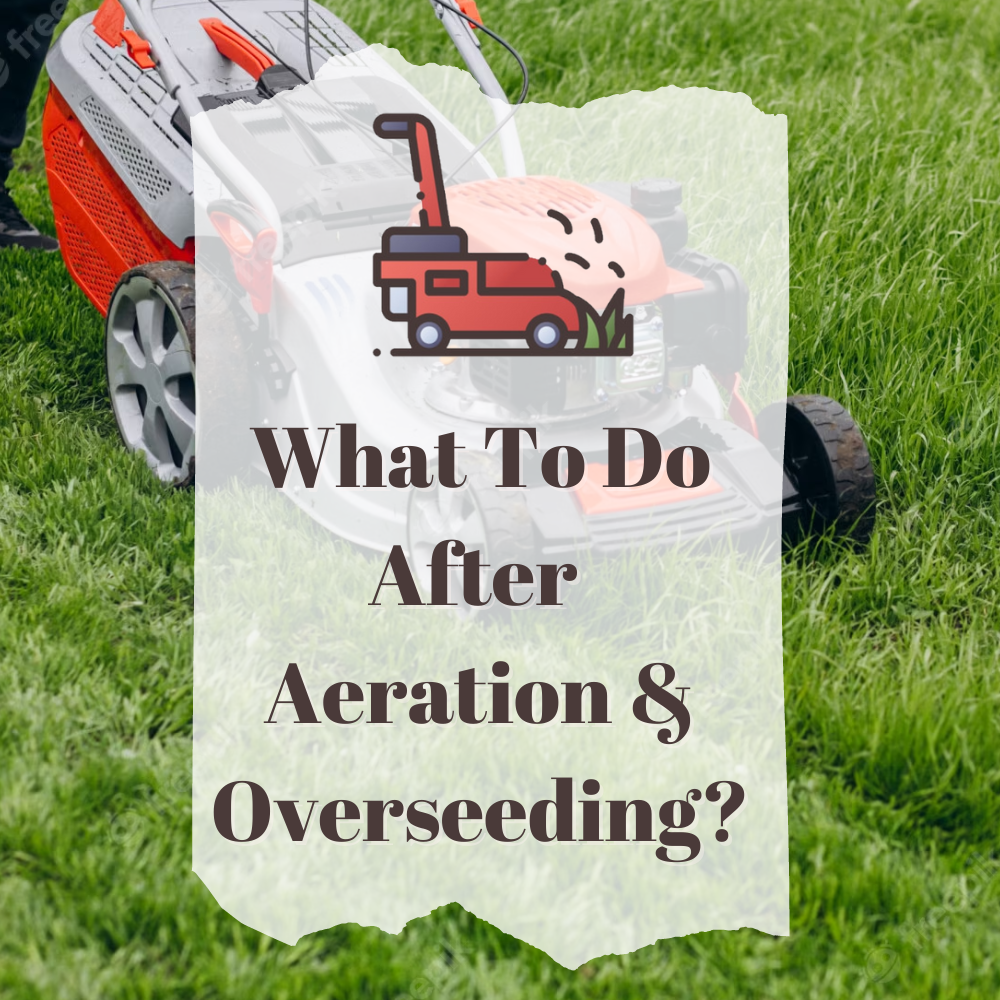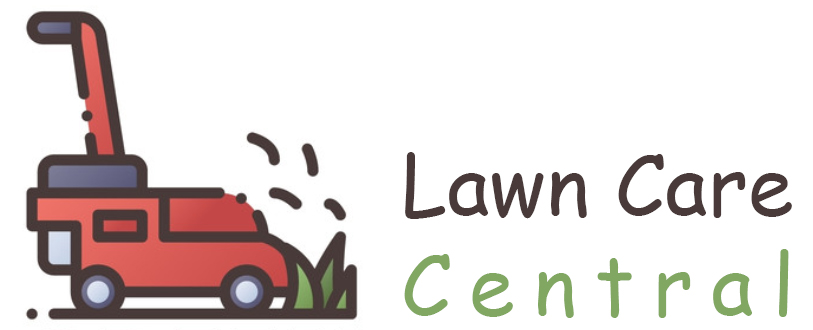
After spending time and effort aerating and overseeding your lawn, it’s important to take the proper steps to ensure success. As someone who has been through this process myself, I know firsthand how crucial it is to follow through with the necessary aftercare.
In this article, I will share my knowledge and experience on what to do after aeration and overseeding to help you achieve a lush and healthy lawn.
One of the most important things to do after aeration and overseeding is to water your lawn properly. This means watering consistently and deeply enough to keep the soil moist but not waterlogged.
It’s also important to avoid foot traffic on your lawn for at least a few weeks to allow the grass to establish roots. Waiting for germination can be a challenging part of the process, but with patience and the proper care, you’ll soon see new grass sprouting up.
In the following paragraphs, I’ll dive deeper into each step of the aftercare process to help you maintain your lawn for long-term success.
Watering Your Lawn
Now that you’ve got your lawn all set up with fresh new seeds, it’s time to give those thirsty little guys a good drink of water. After aeration and overseeding, your lawn will require more water than usual.
You should water your lawn twice a day for the first two weeks after overseeding. This will help keep the soil moist, which is crucial for seed germination.
When watering your lawn, it’s important to water it deeply. This means that the water should penetrate the soil to a depth of at least 6 inches. Shallow watering will encourage shallow root growth, which is not ideal for the long-term health of your lawn.
You can use a rain gauge or a cup to measure how much water your lawn is getting. Aim for about 1 inch of water per week, and adjust accordingly based on weather conditions.
Remember to water your lawn early in the morning or late in the evening to avoid evaporation, which can reduce the effectiveness of your watering efforts.
Avoiding Foot Traffic
To prevent damage to your newly seeded lawn, it’s best to steer clear of walking on it for a little while. It’s important to give the seeds time to germinate and establish roots before any foot traffic can cause harm. As tempting as it may be to go out and inspect your lawn, it’s best to wait at least two to three weeks after overseeding before walking on it.
If you do need to cross your lawn, try to use a different route each time to avoid creating a pathway. You can also lay down temporary stepping stones or boards to disperse your weight and minimize any damage.
Additionally, avoid any heavy machinery or equipment on your lawn during this time, as they can cause even more damage than foot traffic.
By being patient and taking extra precautions, you’ll ensure that your newly seeded lawn has the best chance at thriving.
Waiting for Germination
You’ll need to exercise a little patience as you wait for your grass seeds to germinate and establish roots before you can walk on your lawn.
During this time, it’s important to keep your lawn moist by watering it regularly. Avoid overwatering, though, as this can lead to fungal diseases and other problems. Remember to water deeply but infrequently, and aim to keep the soil consistently damp but not waterlogged.
To help your grass seeds germinate quickly, you can cover your lawn with a thin layer of topsoil or compost. This will help to retain moisture and provide the seeds with the nutrients they need to grow.
Keep an eye on the weather, too, as extreme temperatures or sudden changes in weather conditions can affect the germination process.
Once your grass has started to grow, you can gradually reduce the frequency of watering, but make sure to continue watering deeply to encourage strong root growth.
With a little patience and care, your lawn will soon be lush and healthy.

Fertilizing Your Lawn
Fertilizing your lawn is essential for maintaining a healthy and vibrant green space that will make your neighbors envious.
After aeration and overseeding, your lawn needs the right amount of nutrients to grow strong roots and healthy blades of grass. The best time to fertilize is when the new grass is about two inches tall. This usually takes about 3-4 weeks after overseeding, depending on the temperature and moisture levels.
When choosing a fertilizer, look for products that contain nitrogen, phosphorus, and potassium. These are the three essential nutrients that your lawn needs to thrive. Nitrogen promotes healthy green growth, phosphorus encourages root development, and potassium aids in overall plant health and disease resistance.
Be sure to follow the directions on the bag and apply the fertilizer evenly across your lawn. Avoid over-fertilizing, as this can lead to burning and damage to your grass. A well-fed lawn will be more resilient to stress and better able to fight off weeds and pests, so don’t skip this important step in lawn care.
Mowing Your Lawn
Mowing your lawn is a critical step in maintaining its health and appearance, as it promotes even growth and prevents the buildup of thatch.
When mowing your lawn after aeration and overseeding, it’s important to wait until the new grass has reached a height of at least 3 inches, which usually takes about 2-3 weeks. This allows the roots to establish and grow deep into the soil, which will help the grass withstand the stress of being cut.
When mowing, it’s important to adjust the height of your mower blades to avoid cutting the new grass too short. Cutting the grass too short can damage the delicate new growth and hinder the development of a healthy root system. It’s recommended to set your mower blades to a height of 3-4 inches, as this will allow the grass to grow stronger and healthier.
Additionally, it’s important to mow regularly, as this will encourage the grass to grow thicker and help prevent weeds from taking hold.
By following these simple steps, you can ensure that your lawn remains healthy and beautiful after aeration and overseeding.
Dealing with Weeds and Pests
Now that I’ve mowed my lawn after aeration and overseeding, it’s time to address another important issue: weeds and pests. These unwanted guests can wreak havoc on a newly seeded lawn, so it’s important to take proactive measures to keep them at bay.
One effective way to deal with weeds is to apply a pre-emergent herbicide. This type of herbicide is designed to prevent weed seeds from germinating, which can significantly reduce the number of weeds in your lawn. It’s important to apply the herbicide at the right time, usually in early spring or fall, before the weed seeds have a chance to sprout.
Another option is to manually remove weeds as soon as you see them, being sure to pull the entire root system out of the ground. This can be time-consuming, but it’s a highly effective way to keep weeds from taking over your lawn.
When it comes to pests, there are a variety of options depending on the type of pest you’re dealing with. Insecticides can be effective for controlling pests like grubs, while repellents can be used to keep animals like deer and rabbits from feasting on your grass. It’s important to choose the right product for the job and to follow the instructions carefully, as misuse can be harmful to both your lawn and the environment.

Maintaining Your Lawn for Long-Term Success
To maintain your lawn’s long-term success, you’ll want to make sure you’re utilizing proper watering techniques and regularly inspecting for any signs of weed or pest infestations.
Proper watering is essential to keep your newly seeded lawn healthy and growing. Water your lawn deeply and less frequently to encourage deep root growth. This will help your lawn to be more drought-resistant and healthier in the long run. Aim to water your lawn about 1 inch per week, either through rainfall or by watering it yourself.
Regular inspection for weeds and pests is also important to ensure that your lawn stays healthy and lush. Remove weeds as soon as possible to prevent them from taking over and choking out desirable grass. Keep an eye out for pests such as grubs and chinch bugs, which can cause damage to your lawn. Use insecticides and herbicides if necessary, but follow the instructions carefully and only use them as a last resort.
In addition to proper watering and inspection, you may also want to consider fertilization and regular mowing. Fertilizer can provide your lawn with the nutrients it needs to grow and thrive, but choose the right type and apply it at the right time. Mow your lawn regularly to remove dead grass and encourage new growth. Avoid cutting it too short, as this can stress the grass and make it more susceptible to disease and pests.
By taking these steps, you can help ensure that your lawn stays healthy and beautiful for years to come.
Conclusion
Overall, the process of aeration and overseeding can greatly benefit the health and appearance of your lawn. By following the proper steps after this procedure, you can ensure that your lawn will thrive in the long-term.
Remember to water your lawn consistently, avoid foot traffic, and wait patiently for germination to occur. Additionally, fertilizing your lawn at the appropriate time and mowing it at the correct height can further promote growth and health.
Keep an eye out for any weeds or pests and address them promptly to prevent damage to your lawn. With these tips and a little bit of patience, you can enjoy a lush and beautiful lawn for years to come.
